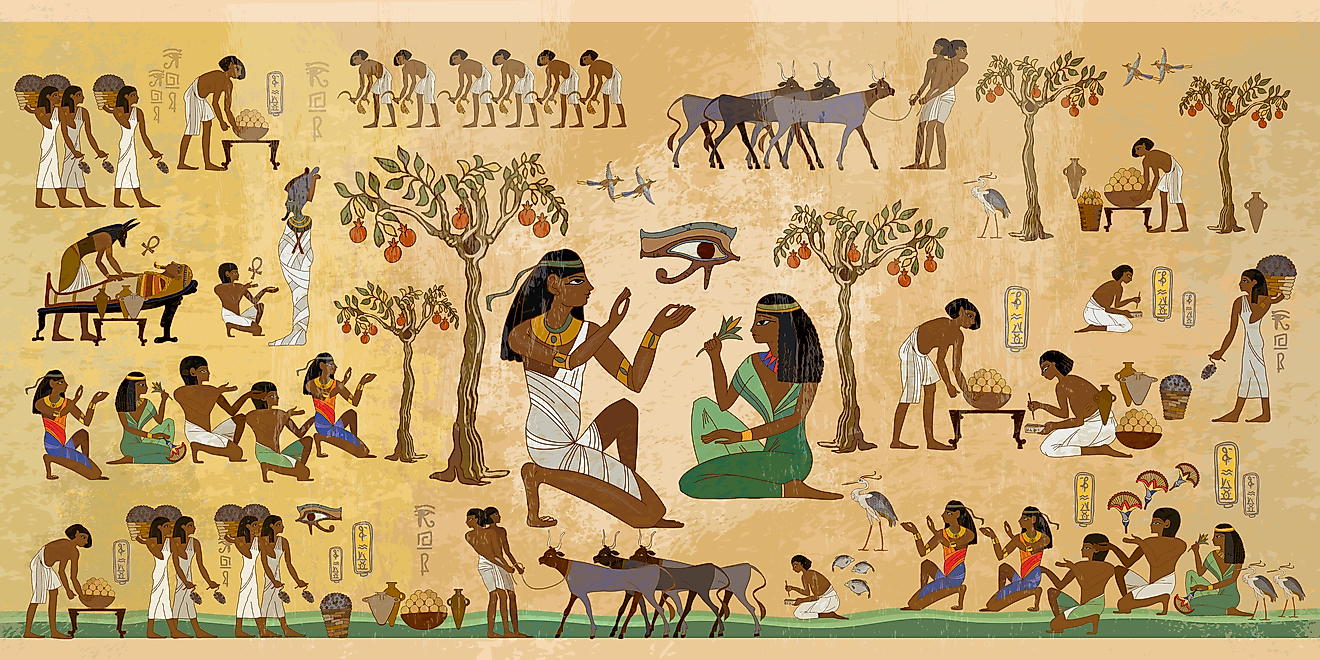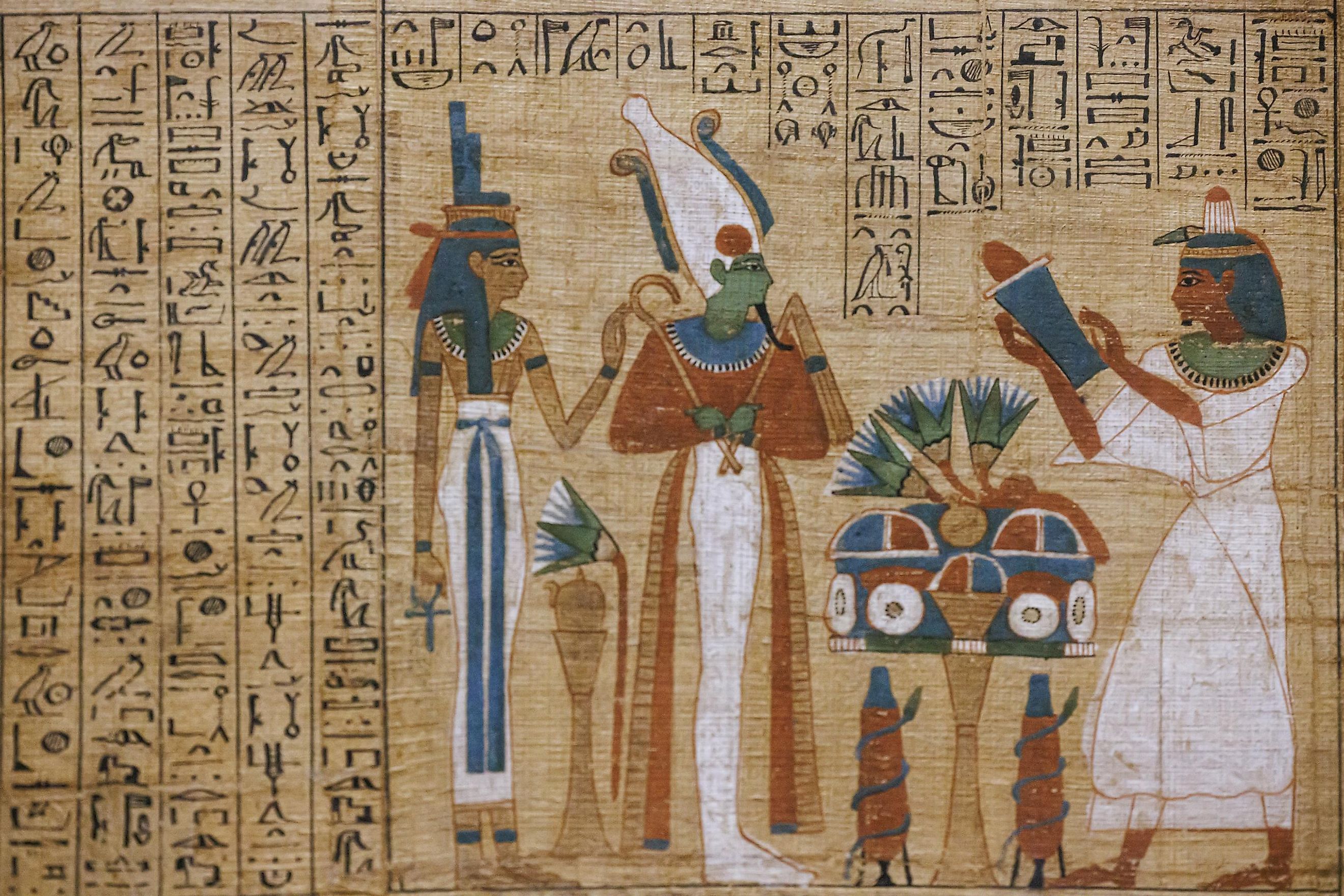
The Unsolved Mysteries Of Ancient Egypt
Ancient Egypt, hailed as one of the world's most ancient civilizations, boasts a storied history dating back to 6000 BCE. Stretching beyond North Africa to neighboring countries like Cyprus, Palestine, and Syria, its influence left behind enduring mysteries and historical marvels. Among these, the construction of the pyramids stands as a timeless enigma, captivating scholars for generations. But the secrets of Egypt go beyond its iconic monuments, as there are still many more unsolved mysteries that historians get closer to solving with the evolution of technology.
The Construction of the Pyramids
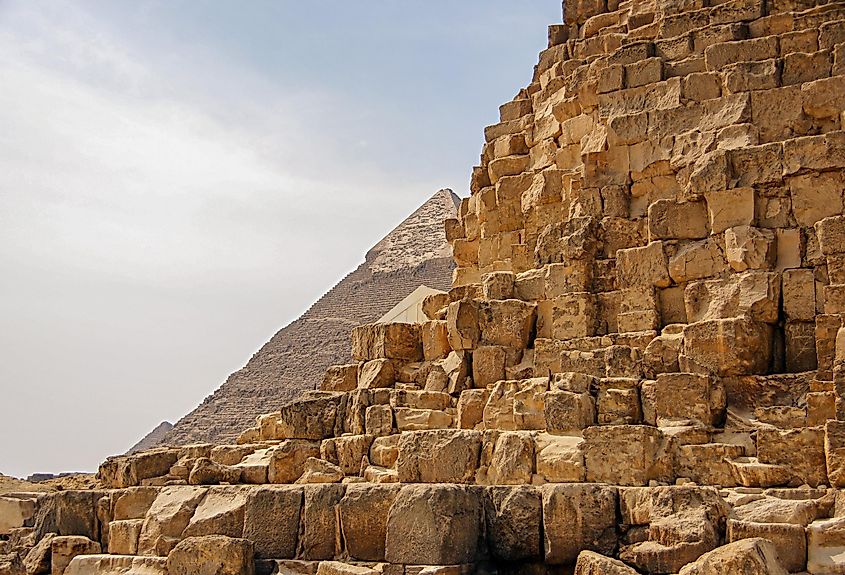
Opening our list of unsolved Egyptian mysteries is the most common of all mysteries, the construction of the pyramids. Everything from the size of stones used to the precision and purpose of the structures inspires the questioning of how ancient Egyptians managed to create such flawless structures with limited resources and no modern-day technology. There are many theories around the matter, like the explanation that ancient Egyptians ferried massive stones across the Nile River to build the pyramids or that laborers rolled the blocks using logs. However, no evidence exists to solidify any claims, and the construction of the pyramids remains a mystery to this day.
The Great Sphinx
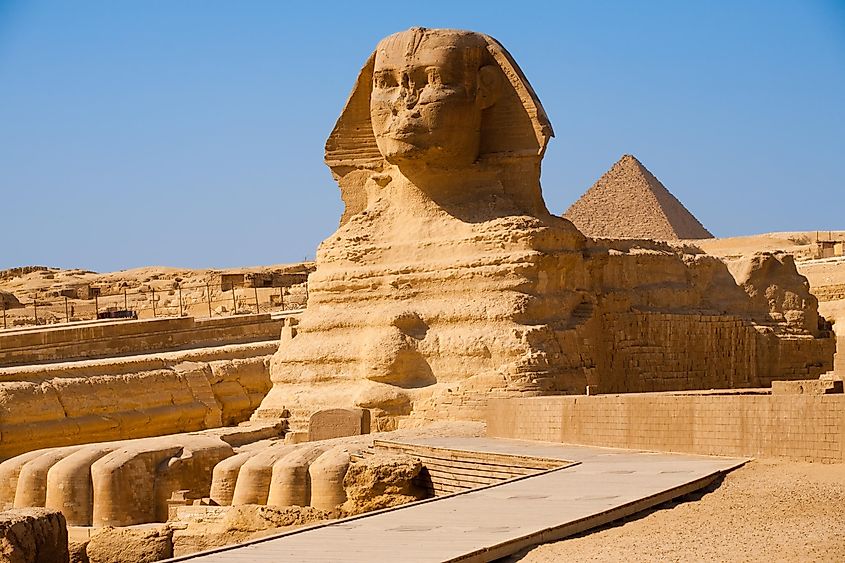
The age and purpose of the Great Sphinx of Giza, with its human head and lion’s body, are still a matter of conjecture. The water erosion theory claims that the Great Sphinx belongs to an Era that predates ancient Egypt. In contrast, other theories claim it is a monument commemorating one of ancient Egypt’s kings. The statue measures 240 ft long from paw to tail and 20 m 66 ft high from the base to the top of the head, comprising a lion’s body and human face.
The Disappearance of Nefertiti

Queen Nefertiti, renowned for her beauty, disappeared from historical records, leading to speculation about her fate and role in ancient Egypt. Queen Nefertiti was one of the most powerful women in ancient Egypt for being the wife of the pharaoh Amenhotep IV. However, despite her importance, there have been no signs or records of her death or where her tomb was buried. Theories and hypotheses of historians suggest that she fell victim to a plague that ravaged the area or was replaced by another woman due to her inability to give birth to a son for her husband.
Unfinished Obelisk
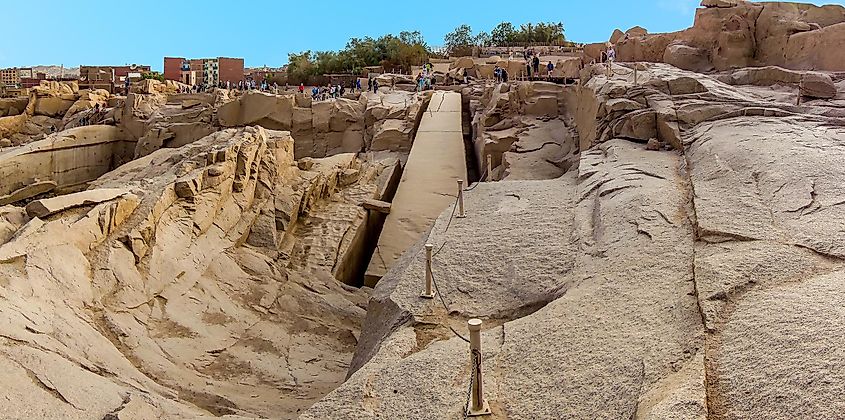
One of the most sizeable ancient mysteries, the unfinished Obelisk is a mass granite that measures 138 ft long and weighs more than 1090 tons. Located in Aswan, 538 mi from Giza, and its many mysteries, the Unfinished Obelisk is a massive piece of stone abandoned during its construction. The reason for its abandonment and the tools used in its creation are still debated. Due to its unusual location, many theories suggest the Obelisk was moved by boat from Giza through the Nile River, with no further explanation on how it was moved or why.
Valley of the Golden Mummies
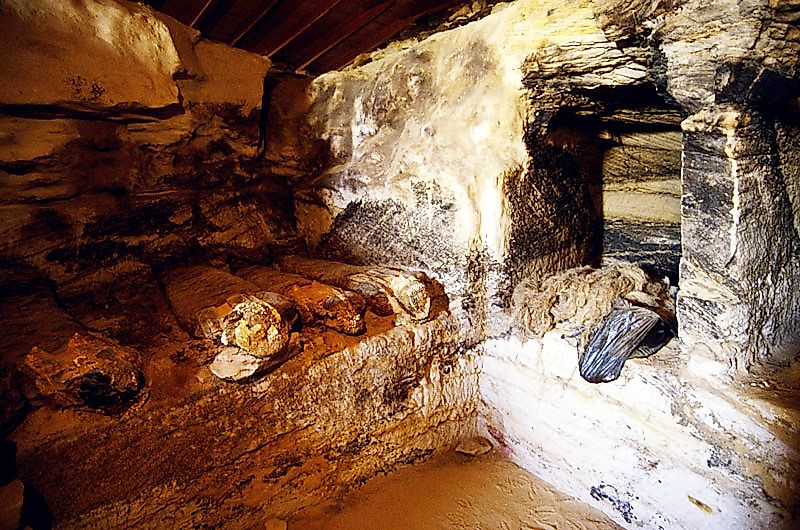
The discovery of the Bahariya Oasis in the 1990s, where hundreds of mummies were adorned with gilded masks, remains a mysterious burial site. Before this discovery, never was a mass tomb with this number of mummies found, as archeologists found more than 250 perfectly preserved mummies divided into five different group tombs based on socio-economic factors. The mummies date back to the Greco-Roman period and had a Greek hairstyle, leading archeologists to question the origins and civilizations to which these mummies belonged.
Lost Tomb of Cleopatra and Mark Antony

Mark Anthony and Cleopatra were partners for over 11 years with three children named Alexander Helios, Cleopatra II Selene, and Ptolemy Philadelphus. Cleopatra is believed to have killed herself by allowing a venomous cobra to bite her, while the theory around Mark Anothony's death is that he stabbed himself with his sword after the Octavian forces reached Alexandria, believing that his partner was already dead. Octavian, the Roman leader who defeated them, allowed their burial together after their defeat, according to historians Suetonius and Plutarch.
Labyrinth Of Giza
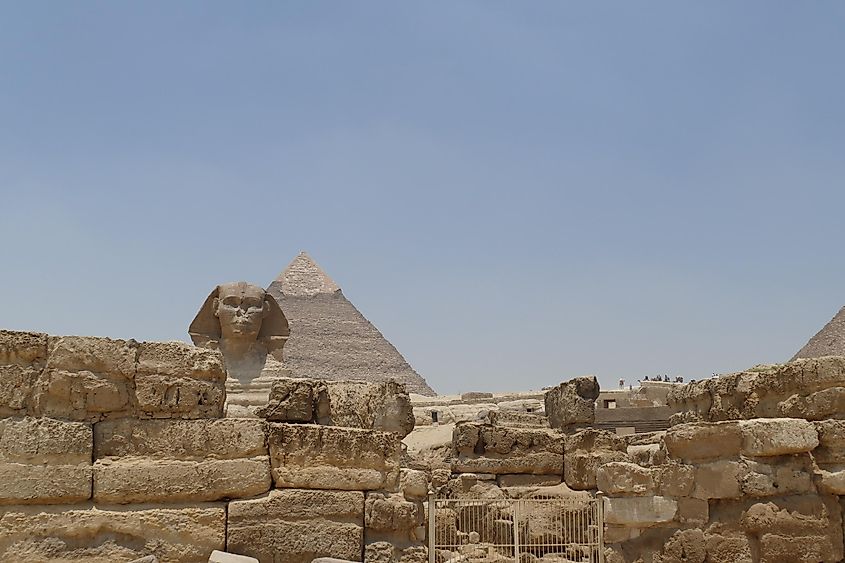
Herodotus, the Greek historian, claims that there is an underground Labyrinth complex near the pyramids of Giza that he witnessed first-hand. Historians and ancient writers claim that the complexity of the Lost Labyrinth puts the pyramids to shame due to their sophistication and complexion of over 3000 different rooms or chambers. The Labyrinth is believed to look like a maze and is divided into three separate floors. It is a mystery because, to this day, historians and archeologists cannot locate it. Although there have been discoveries of a massive stone foundation that measured nearly 1,000 feet across the Great Pyramid, There has been no attempt to unviel the mysterious structure.
Death Of King Tut
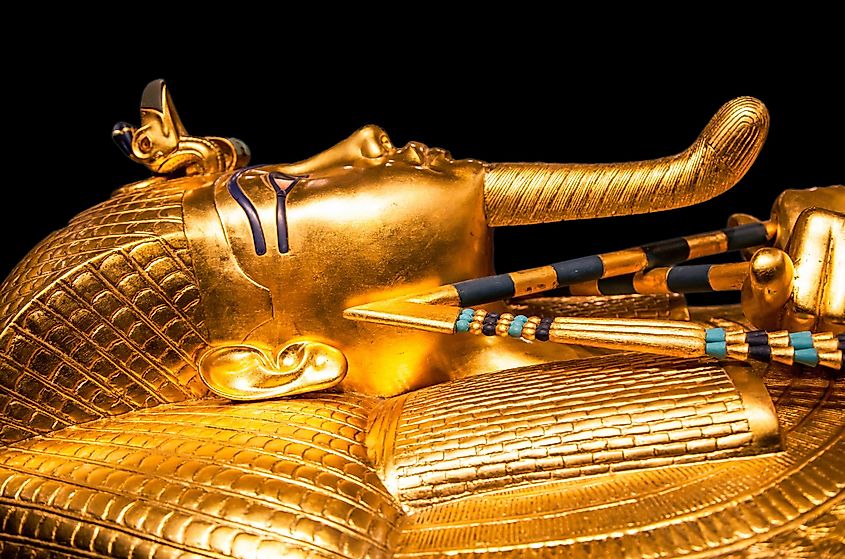
King Tut, or King Tutankhamun, is one of Egypt’s most famous kings, yet his death remains a mystery. King Tut was among the youngest rulers of ancient Egypt, as it is believed that he became king at 19 years old. Unlike other ancient Egyptian mysteries on this list, Archaeologists and historians were able to locate and reveal the mummified corpse of the king resting in a three-layered coffin made of gold. It is not known how he died precisely, leaving historians speculating in what the initial cause of death was. The in-depth analysis of the mummy revealed that the skeleton had a fractured skull and broken knee. The mystery remains whether the king was a victim of a violent death or if the damage was caused by rough mishandling or even suicide.
Curse of the Pharaohs
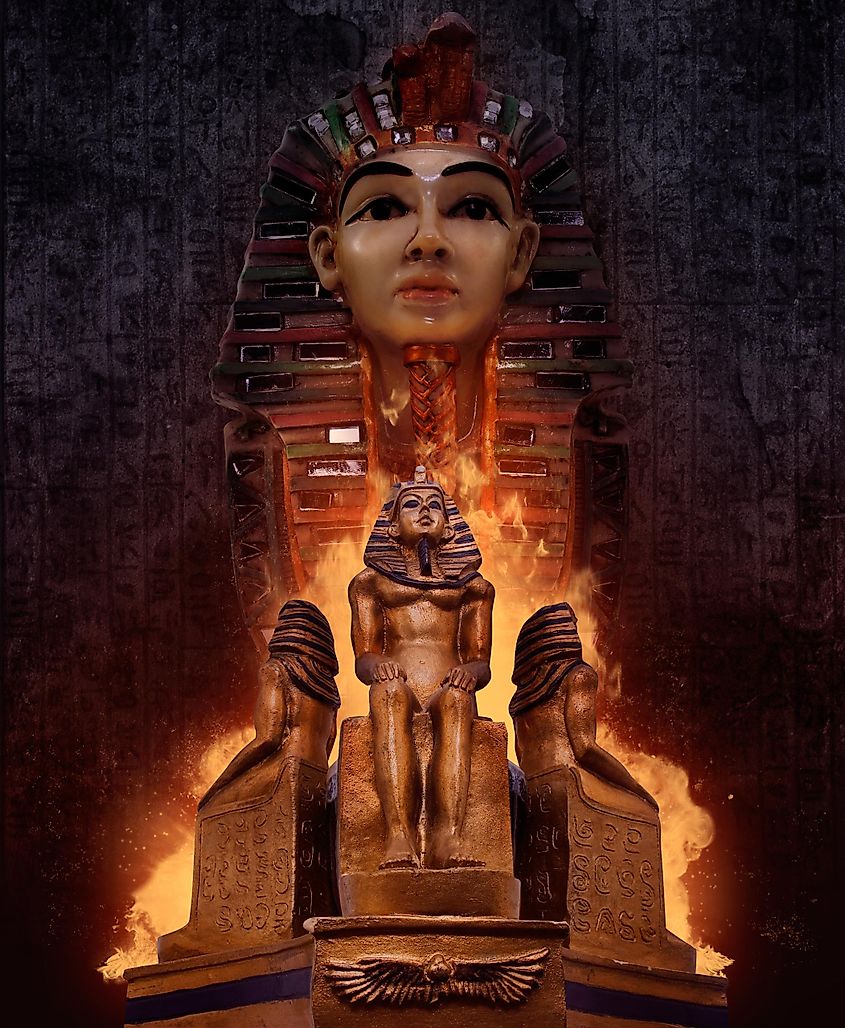
Ancient Egyptians were firm believers in curses, a primary concern to archeologists and mummy thieves alike. From what was deciphered, it is believed that whoever interrupted the deceased will face severe consequences and may be haunted for life. The legends of the many curses date back to the 7th century, during the time Arabs conquered Egypt, and have evolved to become an entertaining Hollywood plot over time. Whether the curse is real or if it is a protective stratagey developed by locals remains an unsolved mystery.
Hieroglyphs

Egyptian hieroglyphics is one of the earliest writings in history, dating back to the 4th century, and their discovery shaped a breakthrough for Egyptologists and historians. Engraving characters and shapes into stones and walls was the ancient Egyptian method of documenting their era and findings. However, deciphering the written messages was an obstacle for historians until the discovery of the Rosetta Stone artifact that helped translate the ancient text. While many of the findings were decoded, the Rosetta stone fails to explain all characters and writings discovered, leaving the remaining Hieroglphys as one of Egypt’s mysteries.
Dendera Light
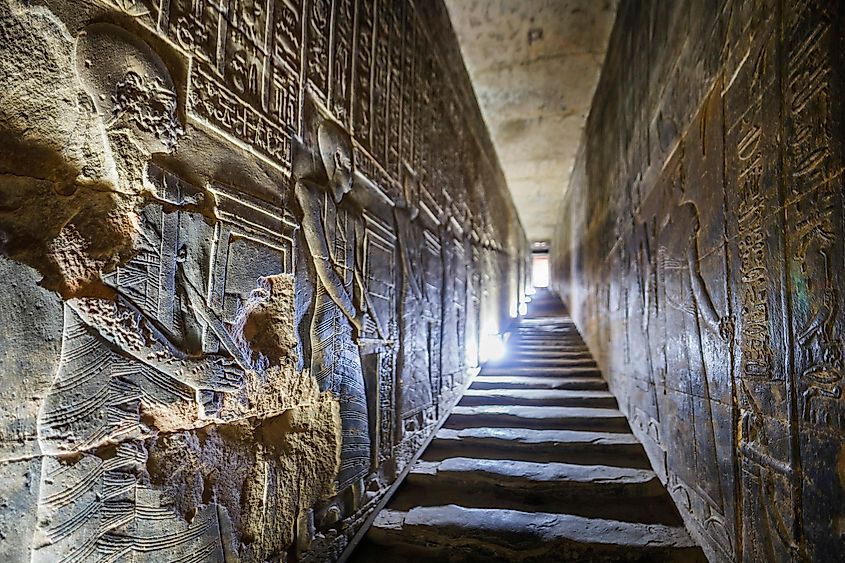
The Dendera light is a mysterious inscription carved into a stone wall that indicates that ancient Egyptians may have discovered some form of electricity. It is located in the Haroth temple in the town of Dendera, which sits along the Nile River 362 mi from the infamous city of Giza. There is a multitude of opinions on what the depiction means. While some claim it is an undiscovered technology, others dismiss the hypothesis as a misinterpreted reading of a religious ceremony due to the lack of supporting artifacts and documentation. Another hypothesis of the inscription of the Dendera light, according to Egyptologists, is the depiction of the sun of god. While researchers may need help understanding the meaning of the Dendera Light, the engraving attracts thousands of history buffs annually and is leveraged as one of the town's main attractions.
Finally, the ancient civilization of Egypt has long been full of intriguing mysteries due to how long the civilization existed. While this list of the unsolved mysteries of ancient Egypt has delved into some of the most iconic enigmas and controversies, it's vital to recognize that prehistoric Egypt's story remains only partially told. The quest for answers continues through discovering more artifacts and a relentless pursuit to unearth the hidden depths of one of humanity's most influential and enduring eras, unraveling more answers with the help of technology.










